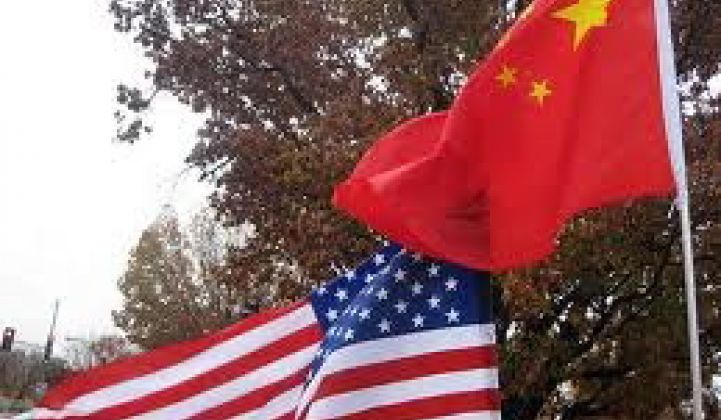China, now the world’s biggest builder of wind farms and solar panels, is also the world’s most renewable-energy-friendly country in the world. Meanwhile, the United States, caught in political and policy gridlock, is slipping into cloudy days and doldrums.
That’s one takeaway from Ernst & Young’s new renewable energy country attractiveness indices report (PDF), which finds the United States dropping 1.5 points from last year on its “All Renewables Index (ARI)” to tie Germany at the number-two spot behind China.
At fault, says the report, is “ongoing uncertainty over the country’s long-term renewable energy strategy and a failure to indicate if there will be an extension to the critical Production Tax Credit (PTC) for wind projects.” We’ve covered the wind power industry’s struggles with Congress on this issue, as well as the economic factors (read: cheap natural gas) that have put wind farms at a disadvantage in the market.
The second quarter of 2012 saw about 2 gigawatts of green power projects financed, but the report paints a gloomier picture for 2013, saying build capacity will lag this year’s growth. Amidst the bad news, the report slips in a couple of brighter points, such as a projection that U.S. geothermal industry is poised for expansion, despite a 2013 expiration date on the industry’s production tax credits. It also highlighted smart grid as a bright spot in the U.S. picture, with utilities expected to spend $567 million in 2012 on smart grid-related software, up 19 percent from the previous year.
Meanwhile, Germany provides a counterexample to the U.S. picture, with a new solar PV tariff and compensation for offshore grid connection delays that should keep it on track for its ambitious renewable goals, Gil Forer, Ernst & Young’s global cleantech leader, said in a prepared statement. Germany’s challenge is now to connect its growing share of wind power in the north to load centers in the south, as well as to manage its increasing share of distributed solar PV.
As for China, it may be the world’s biggest maker of wind and solar power gear, and it recently upped its domestic solar power goals to 50 gigawatts by 2020, which would put it on track to match its number-one spot in wind power.
Still, the report cites challenges for China, such as oversupply of wind turbines and solar panels, as well as grid transmission issues it faces in transporting far-off renewable energy to population centers. (Ernst & Young splits out its index into three categories: wind at 55 percent (80 percent onshore, 20 percent offshore), solar at 32 percent (85 percent PV and 15 percent thermal), and biomass and other resources at 13 percent.)
Fourth-place India slipped by a full point in the ARI, mainly because of its 600-million-person blackout last month. Forer noted that the event has led to “speculation that the country has attracted insufficient private investment to modernize its power infrastructure and that renewable energy investment may suffer amid wider power system reforms.”
Even so, it’s a bit depressing to note that a blackout that put twice the total population of North America into the dark for days merits a 1-point reduction, while the political mess facing the U.S. green power industry is worth a 1.5-point deduction. Blackouts eventually end, after all -- but gridlock could last, well, forever.



